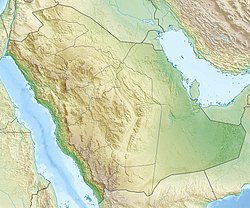Background
An estimated 14% to 15% of the approximately 16 million natives of Saudi Arabia are Shia Muslim. Most Shia Muslims live in the oil-rich areas of the Eastern Province that Qatif is located in. The government of Saudi Arabia follows the strict Sunni Islamic "Wahhabi movement", which dominates religious institutions, courts and education of the kingdom and believes that Shia Muslims are not true Muslims; thus Shia have alleged severe discrimination in Saudi Arabia. [6] [7] According to a 2009 Human Rights Watch report, Shia citizens in Saudi Arabia "face systematic discrimination in religion, education, justice, and employment". The report alleged widespread discrimination against Saudi Shia, including restrictions in the state education system, where Shia students were forbidden from learning about their religion and told they were unbelievers by Sunni teachers. Judges often ban Shia witnesses during trials because of their faith and bar Shia from taking jobs in government ministries or the military. [8] In the weekly sermons in the mosques, Shiites are regularly denounced as heretics and infidels. [9]
At the time of the incident, the Syrian civil war spawned the creation of the Islamic State, which also gained prominence in Iraq before spreading to other places in the region. Saudi Arabia was also partaking in bombings during the Yemeni civil war. In November 2014, eight Shia worshippers were killed by gunmen during Ashura mourning at a shrine in the city of al-Ahsa. Jafar Al Shayeb, a member of the Qatif municipal council, says that sectarian tensions have already risen sharply as a result of the war Saudi Arabia's new King Salman is waging against the Houthis and that divisive rhetoric from Wahhabi preachers was increasing. He believes that the situation for Saudi Shia was about to get worse. [8]
Critics point out that the government has done nothing to address rising sectarian tensions in the country. The country is built on the Wahhabi creed of Islam, whose ideology shares many similarities with that of the Islamic State. Hours before the bombing, one imam in Riyadh was quoted as telling devout worshippers at the end of Friday prayers: "Allah, attack all the Shia everywhere; Allah, send them earthquakes; Allah, kill them all." [10]
Responsibility
In an online statement, the Islamic State claimed responsibility, saying their soldiers were behind the attack at the Imam Ali Mosque and that one of their suicide bombers, identifying him as Abu Amer Al-Najdi, had detonated an explosive belt. [15] An Islamic State-affiliated Twitter account posted an image of a suicide bomber they say was involved in the attack. [16] Saudi authorities, however, identified Saudi national Salih bin Abdurrahman Salih Al Ghishaami as the suicide bomber. [17]
Dammam Mosque bomb blast
According to Saudi Kingdom's official news agency a suicide bomber on Friday the 29 May 2015 has blown himself up in the parking lot of a Shia mosque in Saudi Arabia's city of Dammam a coastal city about 70 kilometers (45 miles) from the Persian Gulf. [28] Reportedly four people have died after a suicide bomber targeted a Shia mosque Imam Hussain in Saudi Arabia's eastern province which is the second attack of its kind in a week, fuelling fears of an organised campaign by the Islamic State to foment sectarian tensions inside the conservative Sunni kingdom. The terrorist organization quickly claimed that the latest attack had been carried out by one of their "soldiers of the Caliphate" identifying the suicide bomber as Abu Jandal al-Jazrawi. [29]
Dammam Mosque Victims and attacker
Preliminary reporting revealed that the explosion was a result of car bomb blast, however, Saudi Arabian Interior Ministry later confirmed that the explosion happened when a person wearing female clothes blew himself up using an explosives belt at the mosque's gate as the security men were approaching him to check his identity. Interior Ministry spokesman also stated that those "martyred" in the attack were: [30]
- (1) Abdul-Jalil Al-Arbash,
- (2) Mohamed Al-Eissa (cousin of Jalil Al-Arbash )
- (3) Mohamed Jomaa Al-Arbash (Elder brother of Jalil Al-Arbash)
- (4) Abdul Hadi Salman Al-Hashim
The three injured victims were identified as (i) Ahmed Abdullah Al-Abdul Karim, (ii) Hassan Ali Al-Sagheerat, and (iii) Hassan Al-Nijaidi. [31]
The Saudi Arabian interior ministry also disclosed the identity of the attacker as 19-year-old Khalid Ayed Mohammed Wahhabi Shammari. [32]
According to Middle East Eye Net and Shia Post, a male attacker dressed in traditional female clothing as a cover-up, after finding the female entrance closed, had attempted to enter the mosque from male entrance. The attacker was challenged by a young Shia volunteer, Abed AlJalil Al-Arbash, at Masjid Imam Hussain who dared to Stop the Suicide Bomber at the Parking Lot Gate and foiled the suicide attack by sacrificing his own life. [33] [34] Per sources of KSN News (KSNW-TV) Abduljaleel's older brother, Muhammed Jumah Alarbash, has also died on Friday night from injuries he sustained in the terror attack on 29 May 2015. [35]
This page is based on this
Wikipedia article Text is available under the
CC BY-SA 4.0 license; additional terms may apply.
Images, videos and audio are available under their respective licenses.

